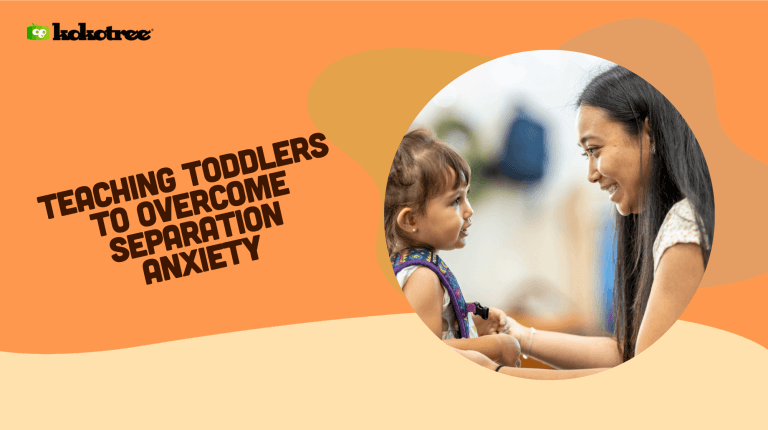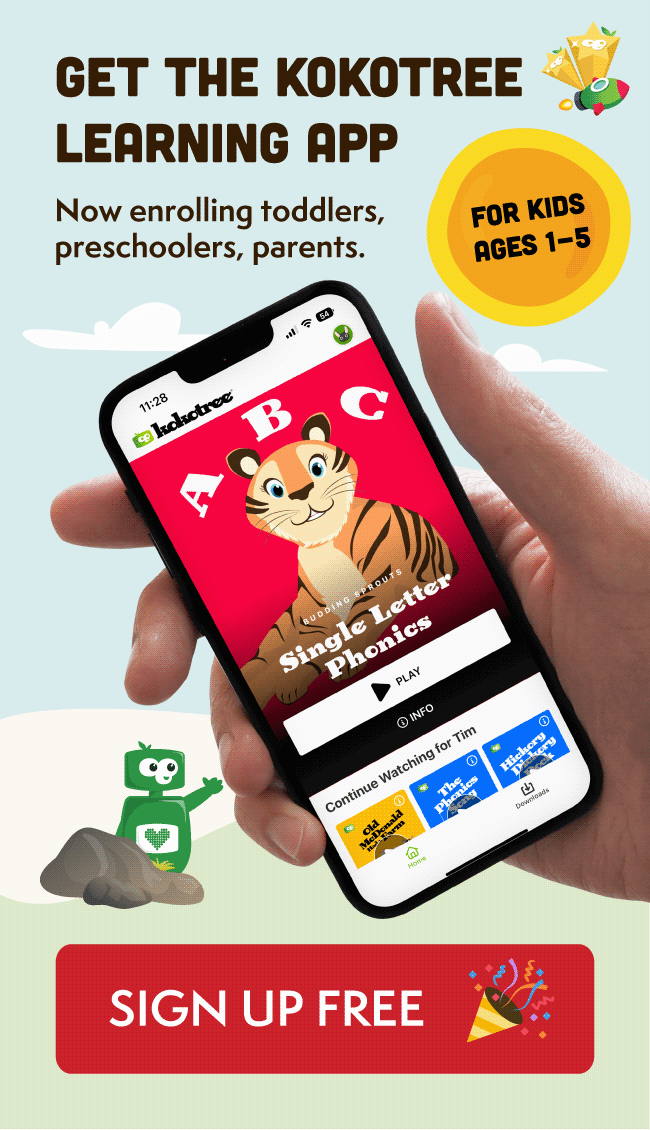

It can be difficult for the parent (caregiver) and child to spend time apart, and the possibility of saying goodbye might foster feelings of fear and anxiety in your little one.
The level of separation anxiety varies significantly between kids. When the caregiver is away for short periods, some toddlers may cry uncontrollably, while others express their worry by fussing or becoming increasingly clingy.
Remember that the evolution of time generally helps alleviate symptoms, but specific preparation to help your toddler cope might be necessary.
Here are some things to look out for and ways you can help your young one manage such complicated feelings to help them feel more safe and secure.
Separation anxiety is a typical emotional response experienced by toddlers when separated from their primary caregiver, such as a parent or guardian. It is a normal part of a child’s development, usually occurring between 6 months to 3 years old. During this time, toddlers may cry, become clingy, or throw tantrums when separated from their caregiver. This is due to their inability to understand that their caregiver will return and is a temporary absence. Separation anxiety can be alleviated through consistent routines, reassuring language, and gradual exposure to separation.
Many children experience separation anxiety, and it is found to be especially common in children aged six months to 3 years. When toddlers find their parent or primary carer absent, they may feel anxious and uneasy.
They are still learning that these separations are temporary and cannot get through these periods without exhibiting their fears.
Separation anxiety is a common and even essential part of a child’s development as it signifies forming attachments with their parents and caregivers. Typically, this might go away gradually through early childhood.
Separation anxiety is seen in children after they understand object permanence, that is, that objects continue to exist even when they cannot be sensed.
While some babies develop object permanence and separation anxiety as early as 4 to 5 months, more severe symptoms of separation anxiety are usually seen at around nine months. Many might skip the infant stage of separation anxiety altogether and begin experiencing challenges at 15 to 18 months.
Separations are even more challenging when your little one is hungry, exhausted, or sick, which is the case for most toddlers.
Children may become even more sensitive to separations as they grow more independent during the toddler years. When facing potential goodbyes, they act out in loud, tearful, and difficult-to-manage ways. Remember that this is the only way your child can express their discomfort, and remember to be patient with them.
These behaviors are hardly any cause for worry, as children are beginning to move around more at this age, so concerns regarding separation are reasonable from the survival perspective.
Children would be more likely to get lost if they could crawl or walk away from their caregiver without fear of strangers or being alone.
Signs of separation anxiety are usually relatively easy to spot. Does your child become inconsolable even during short partings? Or fuss in new surroundings? Some other signs include
It is usual for your toddler to feel anxious when you leave their sight. Be sure to handle these instances with kindness and compassion.
Don’t be alarmed if your child suddenly seems unable to be able to do without your presence all of a sudden even though they got on just fine before. Child regression is more commonly seen in children this age than expected.
Avoiding separation with your toddler is not the best idea if they suffer from separation anxiety, and the idea is to let them gradually get used to their caregiver’s absence.
There is no reason to feel guilty when you must leave your child for a short trip to the supermarket or leave them in someone else’s care when you go to work.
Helping your child manage their emotions without your presence is crucial in developing their independence.
There are many ways you can gently encourage your child out of this phase and help them develop the necessary coping skills to manage their emotions during partings. Preparing in advance and ensuring quick transitions will be your best friends for this.
When you say goodbye to your little one, tell them when you’ll return. The fear of not seeing you again usually results in outbursts and clinginess.
Discussing plans for your return helps reassure your toddler and gives them something to look forward to. Ensure you keep your word; they might be fearful and harder to settle the next time you leave them.
Try promising them something along the lines of a reward when leaving them: “After I’m done with work, I’ll come and pick you up, and we can go to the playground together.” or “Let’s get an ice cream today on our way back home from daycare.”
This will help build trust and independence as your child becomes confident in being without you when you keep your word.

Get free parenting tips, news, updates, and content from Kokotree.
Start with short separations and gradually increase the time you spend apart as your child becomes comfortable with separation.
You can start by simply leaving them in the care of a trusted individual while you leave the room for a few minutes to half an hour. Remember to let them know that you’ll be back in a little bit. “I’m just going to the living room for a call, and I’ll be back before you finish that puzzle.”
These practice runs will also help you better understand what might make them uncomfortable during tantrums.
Their comfort object nearby can help them self-soothe when they part from you in upsetting moments.
Your little one probably has a toy or blanket, maybe even a puzzle game they are especially attached to. Try introducing one in case they don’t have one already.
A special object will help ease your child’s fear and can be gradually phased out as your child adjusts to the new environment.
When you are with your child, please remember what they say. Be careful not to trivialize their concerns. Always reply with compassion and understanding. Moreover, watch out for non-verbal clues like fussing or increased clinginess.
Avoid being pessimistic about your toddler’s difficulty or criticizing them for it. Avoid calling them a “mummy’s girl or boy” or saying, “don’t be such a baby,” for instance.
Try telling your toddler stories that involve a theme similar to what they might be experiencing. This might help encourage them when feeling down as they realize they are not alone in feeling a certain way. ” Once upon a time, there was a mummy piggy, a daddy piggy, and their baby piggy. The little piggy only wanted to stay with mummy and daddy all the time because she was afraid of getting lost.”
When you say goodbye, take care and do so while giving your toddler your full attention. When separating, give them lots of affection and comfort them if they are afraid. However, even if they plead for you to stay, make sure you don’t drag out goodbyes.
When your child is brave about being away from you, boost their self-esteem by giving them lots of positive attention.
If you are introducing a new babysitter, let your toddler practice staying with them first with you are present. This way, when you have to leave your child with them alone, it won’t be as scary as being with a stranger anymore.
If you’re leaving your child somewhere new, like a relative’s house, child care center, or preschool, in the same way, spend time at the new place with your child first. Your toddler is less likely to feel distressed if they’re left in a safe, familiar place with familiar people they trust.
It’s also recommended to inform your child’s relative, child care center, preschool, or school about them experiencing separation anxiety.
Also, let them know what they can do to help your child in case of any outbursts after you leave. This way, other caregivers can help manage your child’s separation anxiety.
You can try to settle your child into an enjoyable activity before you leave. Discuss with your sitter, daycare teacher, or other caregivers having an activity ready for when you hand your toddler over.
If your toddler has an enjoyable activity to look forward to, they are less likely to kick up a fuss at you leaving.
Elizabeth Pantley, the author of The No-Cry Separation Anxiety Solution, suggests getting children engaged in a clapping game or new toy to take their minds off the fact that you’re leaving.
Saying goodbye isn’t just tricky for your child; it can be equally painful for a parent. Try to remain calm and positive when saying goodbye. Remember that how you behave during goodbyes significantly impacts your child’s emotions.
Smile! and let your child know that they will see you soon. Say goodbye to your child briefly, and do not prolong leaving. Coming back for one last hug might have the opposite effect.
When you’re leaving, do so with a happy and relaxed face. If you appear anxious or unhappy, your toddler may feel the place is unsafe, causing them to react negatively as well.
Try to stick to the same ritual of saying goodbyes. Maintaining the exact drop-off timings daily will help you avoid any unexpected aspects.
A routine will reassure your child that you will always return while helping them become accustomed to drop-offs. A routine can help ease the discomfort and help your child build trust in you and their independence simultaneously.
When you leave, inform your child in child-specific terms when you will return. Give them clear details when you talk to them. ” I’ll be back after your nap time” might be better than saying, ” I’ll be back soon.”
Instead of discussing a time, why not try saying you’ll be back after they finish a particular activity or before they start one? If you are away for a day, describe one day as one sleep.
Talking about time in this way is easier to understand for your toddler and hence more reassuring.
Keep in mind that this is a phase, and it will end. Separation anxiety may be more severe in your child than in other children if they have never been cared for by anyone other than you, are naturally shy, or experience other stresses.
Likewise, believe in your intuition. There may be a problem with your toddler’s childcare if they refuse to go to a particular babysitter or daycare center. If they also display other signs of stress, such as difficulty sleeping or loss of appetite, reconsider your childcare option.
It’s natural for toddlers to cry and be upset when they part from their primary caregiver. However, as they age, they can better comprehend that objects and people exist even when they are not in front of them.
Until then, your toddler’s anxiety mustn’t prevent them from exploring and having new experiences, like interacting with others and learning at the nursery. Your work shouldn’t have to be put off, either.
Between the ages of 18 months and three years old, most children show some degree of clinginess and separation anxiety. However, symptoms of Separation Anxiety Disorder (SAD) are more severe.
The symptoms must be present for at least four weeks for a child to be diagnosed with SAD. A child with SAD experiences fears and anxieties about being away from home or family that are inappropriate for their age.
Separation anxiety in toddlers can be triggered by various factors such as changes in routine or environment, fear of unfamiliar people or places, developmental milestones, and a strong attachment to a primary caregiver.
Separation anxiety is a normal developmental phase in toddlers, and most children outgrow it as they grow older and become more comfortable with separation from their primary caregivers.
You can help your 3-year-old with separation anxiety by gradually exposing them to short periods of separation, providing comfort objects, establishing a goodbye routine, and offering positive reinforcement.
The three stages of separation anxiety are protest, despair, and detachment. During the rally, the child expresses distress and tries to prevent separation. Despair is characterized by sadness and hopelessness; detachment is when the child begins to accept the separation.
You can ease separation anxiety in your child by providing a consistent routine, talking to them about their feelings, establishing a goodbye ritual, introducing them to new environments or people gradually, and giving them comfort objects.
Separation anxiety can be triggered by changes in routine, environment, family dynamics, a strong attachment to a primary caregiver, fear of unfamiliar people or places, and developmental milestones.
Separation anxiety is most severe in children between the ages of 1 and 2, but it can also occur in older children and adolescents.
You can help a clingy toddler by providing a secure and consistent environment, gradually exposing them to new experiences, introducing them to new people and backgrounds, and offering positive reinforcement.
You should be concerned about your toddler’s separation anxiety if it significantly interferes with their daily life or persists beyond the age-appropriate developmental phase.
A 3-year-old may be clingy and whiny due to developmental milestones, changes in routine or environment, feeling unwell or needing attention or reassurance from a primary caregiver.
A 3-year-old can become overly attached to a parent or primary caregiver, but this is a normal part of their developmental phase and is usually outgrown as they become more independent.
A toddler can become overly attached to a parent or primary caregiver, but this is a normal part of their developmental phase and is usually outgrown as they become more independent.
You can encourage your toddler’s independence by gradually exposing them to new experiences, offering positive reinforcement, and progressively reducing the physical comfort and reassurance they require.
You can help an overly attached child by providing a consistent routine, gradually exposing them to new experiences, introducing them to new people and environments, and offering positive reinforcement.
A 2-year-old may cry at daycare drop-off due to separation anxiety, fear of unfamiliar people or places, changes in routine or environment, or feeling unwell. Providing a consistent routine and offering positive reinforcement can help ease their anxiety.
Remember, patience is critical when dealing with toddlers. Seeing your little one upset and crying can be frustrating, but don’t be hard on yourself because of that.
Don’t let your nerves get the better of you. Stay calm and smile. Your toddler will feel a lot better when they see you happy.
It is relatively uncommon for separation anxiety to persist daily after preschool. Consult a pediatrician if your youngster isn’t adjusting well to being without you. Your pediatrician can help alleviate your stress and devise a strategy to support you.




